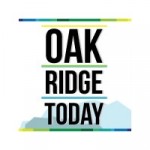By Tracey Beckendorf-Edou
By now, most of us have heard of the 1:1 (one to one) initiative, meaning that every Oak Ridge student would have a device to use both at home and at school. The following are a few of the reasons why going 1:1 is important.
Mostly, it’s better for kids
We live in a world today in which children learn through technology and are often more engaged with what they are learning when technology is incorporated. Technology does not replace good teaching, but it enhances good teaching. Technology does not replace face-to-face communication, but it adds other modes of communication. Does that mean that technology would be included in every lesson? Of course not. Students still need to explore our world in other ways. Going 1:1 does not require teachers to give up their wonderful non-technology related lessons or for students to be glued to their devices 24/7.
But going 1:1 leads us to think: What’s possible? How can students interact with what is happening outside the walls of the classroom? How can students collaborate with people from across the world? How can students receive immediate feedback so that they can improve on their mistakes immediately? For some examples of what that looks like elsewhere, please see here.
One benefit of going 1:1 is that students can do research in the classroom very easily. As Oak Ridge High School science teacher Frank Wood says: “We want students to be problem solvers, not problem memorizers. One-to-one computing goes a long way toward enabling this response.†He adds that going one-to-one promotes creativity, workplace readiness, and preparation for college; it allows the teacher to be flexible to develop lessons that move at the pace of the individual student; and students are able to delve into questions that go beyond the scope of the course. When students find that they can answer their own questions, it’s empowering. Technology is a tool that allows students to create products that express their learning in new and meaningful ways. For more information, see An Introduction to Technology Integration here.
It is important to note that 95 percent of U.S. teens use the Internet, 74 percent on a mobile device (see here). If we want our students to be ready for a technology-rich career and life, then we need to engage them in learning how to use technology in safe, respectful, efficient, and enriching manners.
Oak Ridge is not the only district to be thinking about 1:1. Sooner or later, we will need to make that commitment, but why later? Oak Ridge Schools has been a leader in education in the state and nation, so why not now?
Online testing
In the near future, state testing will be online. So far, we have had mostly paper-pencil testing, but those days are ending. Next year, we will have online writing assessments given by the state; the year after that, we are expecting that almost all state testing will be online or will be transitioning to an online environment.
Last school year, students from across the state took a practice writing assessment and Oak Ridge students outperformed the state in every category (focus/organization, support/elaboration, language/style, and conventions). Yet, when students were asked about writing assessment practice, the only way that Oak Ridge students differed from the state as a whole was in computer writing practice. About 80 percent of Oak Ridge eighth-grade students, for example, reported that they had some to frequent computer writing practice as compared with about 50 percent of their peers across the state. We therefore infer that computer writing practice is beneficial to helping students prepare for online assessments.
This conclusion could lead us to believe that we are already set for computer writing practice; however, there are other competing needs for our current computers.
Response to Intervention and Instruction (RTI2)
Starting in the 2014-2015 school year, all elementary schools across the state are required to offer support for students who are struggling in English, language arts, and mathematics during the school day under very prescriptive definitions. Every student receiving intervention will need to have an intervention plan and will need to do work targeted to his/her particular areas of need. This means that Johnny, who is struggling with adding, will need to have different interventions than Susie, who is struggling with multiplying. With every child needing something different, it makes a lot of sense to use a blended instructional approach, meaning sometimes the child will use adaptive computer-based technology based on his/her specific needs and sometimes the child will work in small groups led by a teacher. Both are important.
The way our computer laboratories work now, we don’t have the capacity to have the computer-based interventions that we need while simultaneously allowing students to practice online assessments and/or do other research-based projects in the classroom.
RTI2 will extend to the middle schools in 2015-2016 and to the high school in 2016-2017, but all secondary schools are already piloting elements of RTI2.
BYOD doesn’t suffice
We could go BYOD (bring your own device), meaning that students could bring their own devices to school to use during the school day. There are, however, a multitude of difficulties inherent in being a BYOD district. One issue is that student devices would be unregulated. Students could be going to unauthorized sites and be participating in unproductive behavior with their devices. If the district owns the devices, then we can install software to view student screens during class in order to prevent off-task behavior. We can also limit the rights for students to install non-approved software. In an unregulated environment, devices can be very distracting.
Also, not every student has a device. Even students who do have devices do not have the same device and even students who have the same device do not have the same updates. It is fairer and provides a better instructional environment when everyone is operating from the same platform.
If we go 1:1, what does that mean?
Going 1:1 means that we will have initial start-up costs. We need to have good technology infrastructure, we need to have technicians, and we need to have professional development on using technology in the classroom in meaningful ways. We will need backpacks that protect devices and we will need to have processes in place for damaged and lost devices.
Going 1:1 does not mean that devices are more important than people. Teachers teach students how to read, write, research, have healthy lifestyles, solve math problems, and ask questions about the world around us, among a whole host of other important things. Devices don’t replace teachers; they simply enhance what teachers and students can and will do in the time allotted to them.
Going 1:1 is a demonstration that our community is staying cutting-edge, that we are committed to offering the best education we can, and that Oak Ridge Schools is a great school district for new families in the area.
Tracey Beckendorf-Edou is supervisor of staff development for Oak Ridge Schools.









Mark Harvey says
Thank you for sharing – this really helps bring the initiative into perspective for the layman. Good information.
Andrew Howe says
While I think the end goal is fantastic and one we should reach to achieve over time, I just have to think now just isn’t the time to burden the tax base for something that isn’t truly needed.
Tech can indeed be a great tool and aid but it’s not truly needed for anything that doesn’t actually require the tech (such as CAD design, Media Lab, Computer courses). Math, english, history, chemistry, biology, human physiology, psychology, home ec, auto shop, wood shop, literature, art. None of those need more than good books and good teachers.
Courses such as graphic arts, where the tools have become as critical as the concepts, would need the proper tools, for sure – the computer, the software. A programming class could benefit from some kind of interactive environment in order to teach about multi-user code design, knowledge bases, code repositories, etc, so for them a kind of network interactivity is useful and marketable.
However, even in both of these scenarios a tablet or other mobile device isn’t at all going to cut the mustard for real work – they need the computer itself.
Seems to me that all we need to teach our kids is computers in the right places for the right courses. The kids who don’t have access to computers or other devices for connectivity could use a computer lab which is far less at risk of loss or theft and would cost us a lot less.
I know the world is tech-crazy these days, and it’s important to try to stay on top of the curve, but this path is risky. Although the concept of working with students in other parts of the world is quite cool, it’s not necessary and can be done with a computer lab or a couple of stations in each class room.
The thing with tech is that it always changes. I’ve been working in the software field for 30 years now. What happens is that everything becomes obsolete so quickly that any ‘bleeding edge’ actions run a huge risk of being out-dated by the time they come to fruition.
It’s simply too risky and asking too much of the tax base to chase such a lofty goal quickly, no matter how noble. Just make sure that all kids have access to computers in case they have none at home. Get them good teachers, quality text books for core curriculum and the right tech for the tech classes, and they’ll pick up mobile device tech on their own through friends I’m quite sure.
Levi D. Smith says
Sounds like a great plan, as long as the parents pay for their children’s electronic devices. I remember having to buy my own TI-81 graphing calculator when I was in high school.
Cindy McCullough says
Hard to make the parents buy the devises, if you want to regulate what applications or what the devices are. IE my son went to a virtual school for some time and they did give the students devices. They could then specify what the device was, what it had on it, what they could do with it, etc. I do have to say the tech support for those devices was not very good, and that is something that is needed in such a tech budget. I, personally, am not sure a school needs to go 1:1 or should.
Raymond Charles Kircher says
To many questions not answered here, but lets start with just a few. Cost of bandwidth to the WWW, Security, Which teachers are prioritized over other teachers on the network, who wants to be tied to the technology provided by what clearly looks to be a fascist plan for technology?